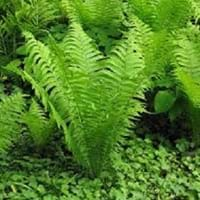Life Span
Perennial
Perennial
Origin
California
North America, Europe, Eastern Asia
Types
Not Available
M. struthiopteris var. struthiopteris
M. struthiopteris var. pensylvanica
Number of Varieties
Not Available
Habitat
Chaparral, River side
Forest margins, Roadsides, Terrestrial
USDA Hardiness Zone
7-10
2-8
Sunset Zone
H1, 4, 5, 6, 7, 8, 9, 10, 11, 12, 14, 15, 16, 17, 18, 19, 20, 21, 22, 23, 24
A1, A2, A3, 1a, 1b, 2a, 2b, 3a, 3b, 4, 5, 6, 7, 8, 9, 10, 14, 15, 16, 17, 18, 19, 20
Habit
Upright/Erect
Thicket/Colonizing
Minimum Width
Not Available
Flower Color
White, Yellow
Not Available
Flower Color Modifier
Bicolor
Bicolor
Fruit Color
Green, Tan
Not Available
Leaf Color in Spring
Gray Green
Green
Leaf Color in Summer
Gray Green
Green
Leaf Color in Fall
Gray Green
Green
Leaf Color in Winter
Light Green
Not Available
Leaf Shape
Lance shaped
Lance shaped
Plant Season
Spring, Summer
Spring, Summer, Fall
Sunlight
Full Sun
Partial Sun
Type of Soil
Loam, Sand
Loam
The pH of Soil
Neutral, Alkaline
Acidic, Neutral
Soil Drainage
Well drained
Average
Bloom Time
Early Spring, Spring, Late Spring, Early Summer, Summer
All year
Tolerances
Drought
Wet Site
Where to Plant?
Ground
Ground
How to Plant?
Cuttings, Seedlings
Divison, Spores
Plant Maintenance
Medium
Medium
Watering Requirements
Needs watering once a week, Water well when planted
Water Deeply, Water when soil is dry
In Summer
Lots of watering
Lots of watering
In Spring
Moderate
Moderate
In Winter
Average Water
Average Water
Soil pH
Neutral, Alkaline
Acidic, Neutral
Soil Type
Loam, Sand
Loam
Soil Drainage Capacity
Well drained
Average
Sun Exposure
Full Sun
Partial Sun
Pruning
prune nearly to the ground in late fall
Remove damaged leaves, Remove dead branches, Remove dead leaves
Fertilizers
organic fertlizers
All-Purpose Liquid Fertilizer
Pests and Diseases
Verticillium Wilt
Red blotch
Plant Tolerance
Drought
Drought
Flower Petal Number
Single
Single
Showy Foliage
Not Available
Yes
Foliage Texture
Not Available
Bold
Foliage Sheen
Not Available
Matte
Invasive
Sometimes
Sometimes
Attracts
Bees, Birds, Butterflies
Hummingbirds
Allergy
no allergic reactions
Skin irritation
Aesthetic Uses
Showy Purposes
Showy Purposes
Beauty Benefits
Not Available
Not Available
Environmental Uses
Air purification
Air purification
Medicinal Uses
antimicrobial, Astringent, Gum Problems, Stomach pain
Bone strength
Part of Plant Used
Flower Stalk
Whole plant
Other Uses
Used as Ornamental plant
Showy Purposes
Used As Indoor Plant
No
No
Used As Outdoor Plant
Yes
Yes
Garden Design
Feature Plant, Groundcover, Mixed Border, Wildflower
Bog Garden, Groundcover, Mixed Border, Wildflower
Botanical Name
ROMNEYA coulteri
MATTEUCCIA struthiopteris
Common Name
Matilija Poppy
Fiddlehead ferns,
shuttlecock fern
In Hindi
Matilija Poppy
शुतुरमुर्ग फर्न
In German
Matilija Poppy
Ostrich Fern
In French
Matilija Poppy
fougère à l'autruche
In Spanish
Matilija amapola
avestruz helecho
In Greek
Matilija παπαρούνας
Στρουθοκάμηλος Fern
In Portuguese
Matilija Poppy
Ostrich Fern
In Polish
Matilija Poppy
Struś Fern
In Latin
Matilija Poppy
struthionem Fern
Phylum
Magnoliophyta
Filicinophyta
Class
Magnoliopsida
Polypodiopsida
Order
Papaverales
Polypodiales
Family
Papaveraceae
Dryopteridaceae
Clade
Angiosperms, Eudicots
Not Available
Tribe
Not Available
Not Available
Subfamily
Papaveroideae
Not Available
Number of Species
Not Available
Properties of Matilija Poppy and Ostrich Fern
Wondering what are the properties of Matilija Poppy and Ostrich Fern? We provide you with everything About Matilija Poppy and Ostrich Fern. Matilija Poppy has thorns and Ostrich Fern doesn't have thorns. Also Matilija Poppy does not have fragrant flowers. Matilija Poppy has allergic reactions like no allergic reactions and Ostrich Fern has allergic reactions like no allergic reactions. Compare all the properties and characteristics of these two plants. Find out which of these plant can be used as indoor plant. If you are interested to decorate your house and garden, find out aesthetic uses, compare them and select the plant which will beautify your surrounding. Along with beautification, try comparing medicinal and edible uses of Matilija Poppy and Ostrich Fern and you can choose the plant having best and most benefits.
Season and Care of Matilija Poppy and Ostrich Fern
Season and care of Matilija Poppy and Ostrich Fern is important to know. While considering everything about Matilija Poppy and Ostrich Fern Care, growing season is an essential factor. Matilija Poppy season is Spring and Summer and Ostrich Fern season is Spring and Summer. The type of soil for Matilija Poppy is Loam, Sand and for Ostrich Fern is Loam while the PH of soil for Matilija Poppy is Neutral, Alkaline and for Ostrich Fern is Acidic, Neutral.
Matilija Poppy and Ostrich Fern Physical Information
Matilija Poppy and Ostrich Fern physical information is very important for comparison. Matilija Poppy height is 120.00 cm and width Not Available whereas Ostrich Fern height is 60.00 cm and width 45.70 cm. The color specification of Matilija Poppy and Ostrich Fern are as follows:
Matilija Poppy flower color: White and Yellow
Matilija Poppy leaf color: Gray Green
Ostrich Fern flower color: Not Available
- Ostrich Fern leaf color: Green
Care of Matilija Poppy and Ostrich Fern
Care of Matilija Poppy and Ostrich Fern include pruning, fertilizers, watering etc. Matilija Poppy pruning is done prune nearly to the ground in late fall and Ostrich Fern pruning is done Remove damaged leaves, Remove dead branches and Remove dead leaves. In summer Matilija Poppy needs Lots of watering and in winter, it needs Average Water. Whereas, in summer Ostrich Fern needs Lots of watering and in winter, it needs Average Water.





